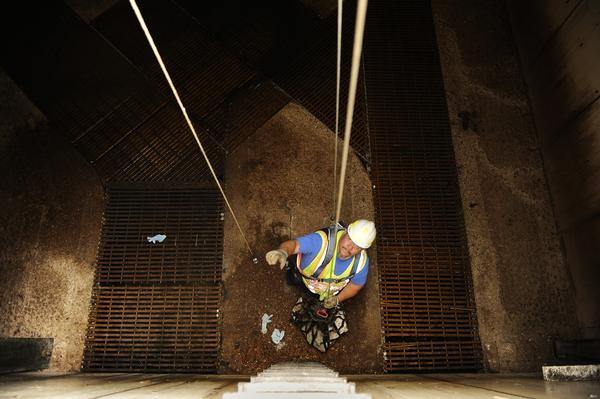Terminal Velocity Edges Liquid Force For Top Honors in Wastewater’s Biggest Event
Terminal Velocity Again Takes Top Prize in the World Series of Wastewater
Terminal Velocity, from Virginia Water Environment Association, has for the third straight year come away with top honors in the Water Environment Federation’s Operation Challenge competition. This fall’s competition was held in New Orleans.
Now in its 25th year, Operations Challenge has grown from an original 22-team event to its current 37-team, two-division format. Winners are determined by a weighted point system for five events, including collection systems, laboratory, process control, maintenance and safety of wastewater treatment facilities.
Full results for this October’s competition were as follows:
Division 1
First Place: Terminal Velocity
Virginia Water Environment Association
Cities of Franklin and Virginia Beach, Va.
Second Place: Liquid Force
Water Environment Association of South Carolina
Mount Pleasant Waterworks, Mount Pleasant, S.C.
Third Place: TRA CReWSers
Water Environment Association of Texas
Trinity River Authority, Dallas, Texas
Division 2
First Place: ReWa Blackwater Bruisers
Water Environment Association of South Carolina
Renewable Water Resources, Greenville, S.C.
Second Place: OCWA Jets
Water Environment Association of Ontario
Ontario Clean Water Agency, Toronto, Ontario
Third Place: Aqua Techs
Water Environment Association of Texas
City of Dallas, Texas
Although the Gazette staff had placed heavy bets on the Aqua Techs of Dallas, clearly our home town favorites, the Blackwater Bruisers of South Carolina dominated their division.
This was the third straight division win for Terminal Velocity. Coached by Elijah Smith and Bobby Williams, the Terminal Velocity team of Steve Motley, Steve Poe, Jason Truitt, and Captain Donnie Cagle competed against 36 teams from across the United States and Canada during the fast-paced, two-day event. The team appears to be unstoppable. Barring injuries, the team is a favorite to dominate the event for the foreseeable future.
The competition is a well-attended and very popular event. It is sponsored by the Water Environment Federation.
Founded in 1928, the Water Environment Federation (WEF) is a not-for-profit technical and educational organization of 36,000 individual members and 75 affiliated Member Associations representing water quality professionals around the world. WEF works to support clean and safe water worldwide. To learn more, visit www.wef.org.




![Ops-Challenge-4-Large-300x259[1]](http://purewatergazette.net/blog/wp-content/uploads/2012/10/Ops-Challenge-4-Large-300x2591.jpg)


![cowwithbiohazard[1]](http://purewatergazette.net/blog/wp-content/uploads/2012/10/cowwithbiohazard1.jpg)
![fluorosis2[1]](http://purewatergazette.net/blog/wp-content/uploads/2012/09/fluorosis21.jpg)

